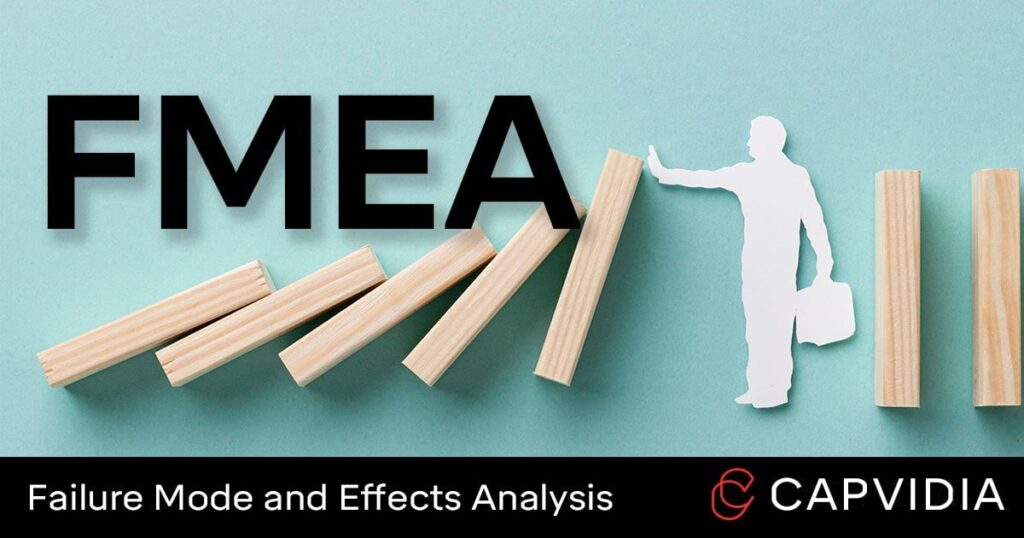Understanding the Role of FMEA in Total Quality Management
Uncategorized- April 30, 2024
- Geeta University

Total Quality Management (TQM) is a comprehensive and structured approach to organizational management that seeks to improve the quality of products and services through ongoing refinements in response to continuous feedback. Within the spectrum of quality assurance techniques employed under the TQM umbrella, Failure Modes and Effects Analysis (FMEA) stands out as an essential proactive tool. This blog explores how FMEA contributes to TQM by enhancing the reliability and safety of products and processes.

Admission Open 2024-2025
For Your bright Future
FMEA
Failure Modes and Effects Analysis (FMEA) is a systematic, step-by-step approach for identifying all possible failures in a design, a manufacturing or assembly process, or a product or service. “Failure modes” refer to the ways, or modes, in which something might fail. Failures are any errors or defects, especially ones that affect the customer, and can be potential or actual.
FMEA is a structured, proactive method used in TQM to analyze potential failures in a product, process, or service. It’s essentially a way to brainstorm all the things that could go wrong and assess the impact those failures might have. By anticipating these issues, you can take steps to prevent them, saving time, money, and – most importantly – ensuring customer satisfaction.
The purpose of FMEA is to take action to eliminate or reduce failures, starting with the highest-priority ones. It provides a documented method for selecting a design with a high probability of successful operation and safety.
The Benefits of FMEA
By incorporating FMEA into your TQM strategy, you can reap several benefits:
• Proactive Problem Solving: Identify and address potential issues before they become real problems.
• Improved Quality: Reduce defects and improve overall product or service quality.
• Cost Savings: Prevent costly rework and recalls.
• Enhanced Safety: Identify and mitigate potential safety hazards.
• Increased Customer Satisfaction: Deliver products and services that meet or exceed customer expectations.
FMEA: A Pillar of TQM
FMEA is a powerful tool that complements any TQM program. By proactively identifying and mitigating risks, you can ensure a continuous focus on quality and customer satisfaction. So, the next time you’re looking to strengthen your TQM approach, consider incorporating FMEA. It might just be the secret weapon your quality journey needs. Failure Mode and Effects Analysis (FMEA) isn’t just a theoretical framework within Total Quality Management (TQM). It’s a powerful tool that translates directly into real-world applications across various industries. Here’s a glimpse into how FMEA is implemented in different sectors:
Automotive Industry: Ensuring Safety on the Road
For car manufacturers, even minor malfunctions can have life-threatening consequences.expand_more FMEA plays a crucial role in prioritizing safety.expand_more Consider a scenario where the FMEA team analyzes the braking system. They might brainstorm potential failures like brake pad wear, faulty ABS sensors, or hydraulic leaks. By assessing the severity (potential for accidents), occurrence (frequency of wear and tear), and detection (difficulty in identifying a failing component), they can prioritize risks. This leads to designing more durable brake pads, redundancy in the ABS system, or sensor systems that trigger warning lights for early detection. FMEA ensures that safety features are robust and potential issues are addressed before a car rolls off the assembly line.
Software Development: Building Bug-Free Programs
In the fast-paced world of software development, FMEA helps identify and fix bugs before they reach the end user. Imagine a developer using FMEA for a new online payment system. Here, potential failures could include incorrect transaction processing, data security breaches, or login malfunctions. By rating the severity (financial loss for users), occurrence (frequency of cyberattacks), and detection (effectiveness of security protocols), the team can prioritize areas for improvement. This might involve implementing robust encryption algorithms, adding two-factor authentication, or thorough unit testing to catch errors early in the development cycle. FMEA empowers developers to deliver high-quality software that is secure and reliable.expand_more
Chemical Manufacturing: Preventing Catastrophic Incidents
The chemical industry deals with potentially hazardous materials, making FMEA a critical safeguard. Let’s consider a chemical plant using FMEA to analyze a storage tank for flammable liquids. Potential failures could include tank leaks, pressure gauge malfunctions, or human error during maintenance. Through FMEA, the team would evaluate the severity (potential for explosions), occurrence (likelihood of equipment failure), and detection (effectiveness of leak detection systems). This would lead to actions like regular tank inspections, redundant pressure monitoring systems, and standardized maintenance procedures with clear safety protocols. FMEA fosters a culture of safety awareness and helps prevent catastrophic accidents in chemical plants.
Healthcare Industry: Improving Patient Care
The healthcare industry prioritizes patient safety and well-being. FMEA can be a valuable tool for identifying and mitigating risks associated with medical procedures.expand_more For instance, a hospital might use FMEA to analyze a surgical procedure. Potential failures could include surgical instrument malfunction, medication errors, or anesthesia complications. By rating the severity (risk to patient health), occurrence (frequency of human error), and detection (effectiveness of safety checklists), the team can prioritize areas for improvement. This might involve implementing stricter medication dispensing protocols, using checklists to verify equipment functionality, or standardizing surgical procedures to minimize errors. FMEA contributes to improved patient care by proactively identifying and addressing potential risks in healthcare settings.expand_more.
By understanding its contribution and significance, businesses can unlock a world of benefits, enhancing quality and achieving a competitive edge.
Proactive Problem Solving: The Core Contribution of FMEA
Traditional quality control measures often focus on detecting and correcting defects after they occur. While essential, this reactive approach can be costly and inefficient. FMEA, on the other hand, flips the script by embracing a proactive stance. By systematically analyzing potential failures, it allows businesses to identify and address weaknesses before they manifest as real-world problems. Imagine a car manufacturer relying solely on post-production testing to identify faulty brakes. This reactive approach could lead to recalls and safety hazards. However, by employing FMEA during the design phase, the team can proactively assess the likelihood of brake pad wear, sensor malfunctions, or hydraulic leaks. This empowers them to design more durable components, implement redundancy in safety systems, and incorporate early-warning mechanisms like sensor lights. FMEA’s contribution lies in this forward-thinking approach, enabling businesses to identify and address problems at their root cause, preventing costly rework, delays, and potential safety issues.
Enhanced Quality: The Tangible Benefit of FMEA
By proactively mitigating potential failures, FMEA directly translates to improved quality across various aspects of a business. In the context of manufacturing, FMEA helps design robust products with fewer defects. This can be seen in the automotive industry, where FMEA-driven decisions result in vehicles that are more reliable and require less maintenance. Similarly, in software development, FMEA helps developers catch bugs early in the coding phase, leading to a more stable and user-friendly product upon release. The healthcare industry benefits by leveraging FMEA to optimize medical procedures, minimizing the risk of errors and ensuring patient safety. The ripple effect of FMEA extends beyond product quality – it also promotes process quality. Businesses can optimize their operations by identifying potential bottlenecks, inefficiencies, and areas for improvement. For instance, an FMEA analysis of a supply chain might reveal potential disruptions due to a single supplier. This foresight allows the company to diversify their logistics network, mitigating the impact of unforeseen events. Overall, FMEA’s contribution to improved quality translates to a competitive advantage. Businesses that deliver consistently high-quality products and services gain customer trust and loyalty, securing a stronger market position.
Cost Savings: A Hidden Gem of FMEA
While often overlooked, FMEA’s contribution in cost savings can be substantial. Imagine the expense of a nationwide car recall due to faulty brakes or the financial losses associated with a software bug that disrupts online transactions. By preventing these scenarios, FMEA helps businesses avoid the hefty costs associated with rework, recalls, and customer service issues. Furthermore, FMEA promotes efficient resource allocation. By prioritizing risks based on severity and likelihood, companies can focus their resources on addressing the most critical issues. Additionally, FMEA helps streamline processes, leading to reduced production time and improved operational efficiency. These factors combined contribute to significant cost savings across the entire value chain.
Safety: A Critical Contribution of FMEA
In industries where safety is paramount, FMEA plays a critical role. Imagine a chemical plant neglecting to analyze potential failures in a flammable liquid storage tank. The consequences of a leak or malfunction could be devastating. Through FMEA, such facilities identify risks like tank leaks, pressure gauge malfunctions, or human error during maintenance. This proactive approach allows them to implement mitigation strategies such as regular inspections, redundant pressure monitoring systems, and standardized safety protocols. The contribution of FMEA in these scenarios goes beyond cost savings – it ensures the safety of employees, the surrounding communities, and the environment. Similarly, FMEA helps in the aviation industry by analyzing potential failures in aircraft systems, contributing to the safety of passengers and crew.
Improved Customer Satisfaction: The Ultimate Goal of FMEA
Ultimately, every contribution of FMEA converges towards one goal – increased customer satisfaction. By delivering consistently high-quality products and services, businesses build trust and loyalty with their customers. Customers are more likely to choose a company that offers reliable products, efficient processes, and a culture of safety. Furthermore, FMEA helps businesses identify potential issues that could negatively impact the customer experience. Take the example of an online retailer failing to analyze the likelihood of system crashes during peak shopping hours. FMEA could predict this potential failure and prompt
Conclusion: FMEA - A Versatile Tool for Quality
These examples showcase the versatility of FMEA across various industries. From ensuring safety on the road to delivering bug-free software, FMEA empowers businesses to proactively identify and mitigate risks. By incorporating FMEA into your TQM program, you can achieve operational excellence, improve customer satisfaction, and build a strong foundation for continuous quality improvement. Incorporating FMEA into TQM practices offers organizations a robust methodology for anticipating and mitigating potential failures. This synergy not only enhances the quality and reliability of products and services but also fosters a culture of strategic improvement and risk management. Through continuous application of FMEA, companies can maintain competitive advantages in quality leadership, ultimately fulfilling the promise of Total Quality Management.
Tags
Related Posts

Education trends after Covid 19 – Geeta University
The COVID 19 pandemic flipped the world’s education system upside down this year, causing a significant shift in how pupils learn and teachers teach. Education Trends after Covid 19 The COVID 19 pandemic flipped the world’s education system upside down

The future of Cryptocurrency in India – Geeta University
Gartner, leading research and consulting company, had predicted that the banking industry would receive $ 1 billion in business value in the use of blockchain Crypto currencies by 2022. The Future of Cryptocurrency in India Gartner, leading research and consulting

To be a Civil Engineer one must know – Geeta University
Civil engineering is in high demand for work. Working in this field requires very clear skills. It is not easy to find a great civil engineer and the best are richly rewarded. To Be a Civil Engineer one must know
